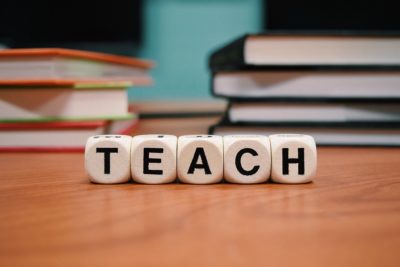План урока по английскому языку для 1 класса по обновленной программе
Обновлено: 06.07.2024
Свидетельство и скидка на обучение каждому участнику
Зарегистрироваться 15–17 марта 2022 г.
LESSON: Unit 3 My family & friends
Days of the week
Teacher name:
Number present:
Learning objectives(s) that this lesson is contributing to
1.L3 recognise with support simple greetings
recognise the spoken form of a limited range of basic and everyday classroom words
1. R1 recognise initial letters in names and places
1.S3 pronounce basic words and expressions intelligibly
Lesson objectives
All learners will be able to:
listen and repeat the words according to the topic Days of the week
Most learners will be able to:
recognise and name some words according to the topic Days of the week
Some learners will be able to:
name and use most of the words according to the topic Days of the week
Previous learning
In my house: There is / There are / Is there /Are there…? Yes/No
Planned timings
Planned activities (replace the notes below with your planned activities)
T. asks every S. to take his/her pencil case and eraser then T. shows the video for prepositions. Ss should repeat actions and words after the video. After Ss should show the same positions of things without video support. Stronger Ss can answer the question “Where is it?”
T. gives different pictures for each S. Ss should give a full sentence using there is / there are and prepositions in, on and under, e.g. There is a bag near the chair, etc.
T. shows PPT to present days of the week. Days are presented by the actions, e.g.: Monday - I get up, Tuesday - I wash my face, Wednesday - I do my hair, Thursday - I put on my clothes, Friday - I go to school, Saturday - I play with my friends and Sunday - I sleep. (T. should use gestures to show all actions)
T. just says the days of the week without PPT Ss should show the appropriate action.
Physical training
T. shows the video about the days of the week and Ssshould sing along the song and do the actions together with T.

Key words and phrases: It’s a pen. This is a pen. These are pens.
School things: bag, book, pen, pencil, pencil case, rubber
colours: red, yellow, green, blue, orange
Useful classroom language for dialogue/writing:
Discussion points:
What colour is it? What is it?
Can you say why…?
Writing prompts:
School things, colors and numbers 1 - 5
Planned activities (replace the notes below with your planned activities)
The T greets the learners and present the lesson objectives. After that the teacher asks the Ss to make a circle and sing a song - “Hello”
Then they chose the cards with school things and sit at the tables according colours (yellow, green, blue, orange)
“Get your pencil”
Cards Worksheets, glue, scissors
Lead in: Lead in: Learners revise some key words from a previous topics (colours and numbers) SS
Pre- teaching: the learners pronouns phrase: adjective + noun ( a red pen, a green pen…)
Cards on the desk
Drilling: Drilling: Learners pronouns the words PB p. 21, then sentences: It’s a pen. This is a pen. These are pens. all together first with the teacher’s support, then with some support.
Cards on the desk
Practice: 1. Learners pronouns the words PB p. 21, then sentences It’s a pen. This is a pen. These are pens. Individually, using the cards on the tables.
Sing a song Pupils sing a song “Get your pencil”
Pupils do the task in AB p. 29
“Get your pencil”
Learners do the Craft activity .They put the school things into the bag. Each group make the presentation of the work using new knowledge.
Worksheets, glue, scissors
Concept checking: bingo game. Learners work individually with the own cards trying find out the correct school thing and cross it out. One of the learners (one by one) take the card and say the sentence like: It’s a pen. This is a pen. These are pens.
Additional information
Differentiation – how do you plan to give more support? How do you plan to challenge the more able learners?
Assessment – how are you planning to check learners’ learning?
Cross-curricular links Health and safety check ICT links
Differentiation can be by task, by outcome, by individual support, by selection of teaching materials and resources taking into account individual abilities of learners
Differentiation can be used at any stage of the lesson keeping time management in mind
Use this section to record the methods you will use to assess what students have learned during the lesson
Health promoting techniques
Breaks and physical activities used.
Points from Safety rules used at this lesson.
Monitor classroom space when sts start moving around
Were the lesson objectives/learning objectives realistic?
What did the learners learn today?
Use the space below to reflect on your lesson. Answer the most relevant questions from the box on the left about your lesson.
What two things went really well (consider both teaching and learning)?
What two things would have improved the lesson (consider both teaching and learning)?
What have I learned from this lesson about the class or achievements/difficulties of individuals that will inform my next lesson?

-75%

Оборудование: учебник, компьютер, экран, мультимедиапроектор, презентация.

Ход урока
I. Организационный момент
Teacher (T): Good morning, girls and boys! I’m very glad to see you! Sit down, please. (Показываю
T: В какой стране мы живем? . Pupil (P): В Казахстане.
T: Верно, именно отсюда мы отправляемся в длительный круиз по стране английского языка. А на каком языке говорят люди в нашей стране? На каком языке говорите вы в своей семье?
P: На казахском и русском языках.
T: Правильно, основной язык для людей, живущих в Казахстане, это казахский язык, русский язык – язык межнационального общения. Но существует много стран, где люди говорят на других языках. Какие страны вы знаете? На каких языках говорят в этих странах?
T: Молодцы! А теперь посмотрите на карту, я покажу вам страны, которые обязательно нам встретятся во время нашего путешествия. В этих странах люди говорят по-английски. (Презентация). Это Великобритания, Северная Ирландия, Америка, Канада, Австралия и Новая Зеландия.
(Учитель показывает страны, обращая внимание на флаги и столицы).
T: Ребята, а кто-нибудь из вас знает, какие сказочные герои говорят на английском языке?

(Презентация, слайды) P: Пятачок, Винни-Пух, Алиса, Мэри Поппинс, Питер Пен, Капитан Крюк, Микки Маус …
T: Как вы думаете, зачем нам нужно изучать иностранный язык? P:…
На английском языке хранится 80% всей информации во всемирной компьютерной сети Интернет. Более 100 миллионов человек говорят на английском языке как иностранном. В общем, ребята, английский язык очень важен и необходим нам. Английский язык поможет вам в вашей будущей профессии. Если вы научитесь говорить и читать на английском языке, вы сможете узнать, что написано на коробках и вещах.
Но чтобы правильно и красиво говорить по-английски, нужно много и добросовестно заниматься в классе и дома. А для этого у каждого из вас есть два помощника: учебник и рабочая тетрадь. Я надеюсь, что вам понравится новый предмет, и вы будете изучать английский с удовольствием. Вы слушаете английские песни, слышите английские слова по телевизору, какие английские слова вы знаете?
II. Ознакомление с речевым образцом What is your name? My name is… и отработка его в устной речи; введение слов hello, good morning, good afternoon, good evening, goodbye.
T: Унас во рту живёт язычок, по английски Mr Tongue, он живёт в домике, наш рот – это его уютный домик, наш рот заборчик. Когда Mr Tongue встаёт, он смотрит в окно и радуется, когда хорошая погода: [o: ],[o:], потом убирает домик, выбивает пыль, вот так: [d],[d]. Хорошо получается: Good.
А потом Mr Tongue звонит в колокольчик [nin],[nin],[nin].Давайте покажем, как смотрит в окно и радуется погоде: [o: ],[o:], как выбивает пыль : [d],[d], как звонит в колокольчик: [nin],[nin],[nin].
А теперь когда пришли все соседи Mr Tongue здоровается: Good morning!( звуки произнести чётко, всё выражение очень медленно).
Дети продолжают учиться здороваться.
Если вы встретились после обеда вы скажете друг другу: Good afternoon.
T-PS Если вы встретились вечером вы скажете друг другу: Good evening.
P1 : Good morning, Ilias!
Ilias: Good morning,Lena!
В игре должны принять участие все дети.

А сейчас я расскажу вам одну историю, которая приключилась с такими же детьми как вы.
Трикки, Том, Тим и Алиса любят гулять в парке. Нетерпеливый Трикки обычно идет впереди и насвистывает [w]-[w]-[w]-[w]-[w] (Предлагаю детям округлить и немного вытянуть губы, как будто они собираются свистеть или задуть свечу). Когда он видит необычное облако, он останавливается и любуется [o:]-[o:]-[o:]-[o:]-[o:] / [wo:]-[wo:]-[wo:]. Грустный Тим останавливается рядом и вздыхает: [t]-[t]-[t]-[t]-[t] (Обращаю внимание детей, что при произнесении звука [t] кончик языка необходимо поставить на бугорки над верхними зубами). Лесное эхо разносит: [wo:t]-[wo:t]-[wo:t].
Вокруг летают пчелы и шмели, собирая пыльцу с цветов: [iz]-[iz]-[iz]-[iz]-[iz]. Веселый толстяк Том, догоняя друзей, слышит: [wo:tiz]-[wo:tiz]-[wo:tiz]. Быстрые стрекозы рассекают воздух: [jo:]-[jo:]-[jo:]. Чтобы было веселее шагать, Том бормочет:[n]-[n]-[n]-[n]-[n] / [m]-[m]-[m]-[m]-[m] (Обращаю внимание детей, что при произнесении звука [n] кончик языка тоже необходимо поставить на бугорки над верхними зубами). Алиса засмотрелась на больших красивых бабочек и отстала от друзей, она кричит им: [ei]-[ei]-[ei]-[ei]-[ei]. Друзья услышали озорное эхо: [neim]-[neim]-[neim]-[neim]-[neim] и остановились, чтобы подождать Тома и Алису. А шутливое эхо все повторяло: [wo:t iz jo: ‘neim] –[wo:t iz jo: ‘neim] – [wo:t iz jo: ‘neim].
P: … (Дети повторяют за учителем все звуки).
T: А сейчас мы вновь послушаем разговор Трикки и Алисы и повторим хором фразы, которые они произносят.
P: … (Дети повторяют фразы за диктором).
III. Закрепление изученного материала.
T: Теперь, когда вы уже умеете знакомиться по-английски, давайте немного поиграем! Встаньте в круг, а я встану в центре круга. Я буду задавать вам вопрос и бросать мячик. Тот, кому я бросила мяч, должен постараться ответить на мой вопрос: What is your name? (Вопрос задаётся каждому ребёнку)
P: My name is…
T: (Учитель проводит следующую игру: дети встают в два круга внешний и внутренний, лицом друг к другу, приветствуют и задают друг другу вопрос: Hello! What is your name? и отвечают My name is… Затем внешний круг движется в одну сторону, а внутренний в другую, таким образом, меняются пары и знакомство продолжается). …
IV. Аудирование детьми команд учителя.
T.: Listen to me and look at me
Stand up, please.
Sit down,please.
Raise your hand.
Put your hand down.
Take your book.
Put your book down.
Take your exercise-book.
Show me your exercise book.
Give me your exercise book.
Thank you
-You are welcome.
Come here.
Dance.
Clap your hands.
Open the door. Close the door.
Look!
Listen!
Дети выполняют вместе с учителем, затем самостоятельно.
V. Подведение итогов урока.
T: Молодцы! Итак, ребята, настало время заканчивать наш урок. Что нового вы сегодня узнали?
Our lesson is over. Goodbye!See you later!
Ps: Goodbye! See you later!
Стих ( Ежкова Л.С. Путешествие с Рифмой)
Hello, my friend, hello
The way to English I show.
Take the book.
Have a look.

Данная разработка урока составлена по обновленной программе образования в РК.
School: named by M.Khamraeva
Date: 27.10.2016
Teacher name: Amansupieva M.
CLASS: 1 Г
Number present:
Learning objectives(s) that this lesson is contributing to
1.L3 recognise with support simple greetings
recognise the spoken form of a limited range of basic and everyday classroom words
1.S3 pronounce basic words and expressions intelligibly
1.S1 make basic personal statements and simple statements about objects
1.UE2 use cardinal numbers 1-10 to count
1.L1 recognise short instructions for basic classroom routines spoken slowly and distinctly
Lesson objectives
All learners will be able to:
Pronounce the numbers
Recognize simple greetings
Recognize Teacher’s instructions
Most learners will be able to:
recognise and name numbers
Point the numbers
Some learners will be able to:
recognise and count from 1 to 10 without mistakes
Previous learning
Your school. Ww-Xx
Planned timings
Planned activities (replace the notes below with your planned activities)
T. invites learners to stand in a circle and to greet each other, to ask & answer the questions:
Читайте также:

